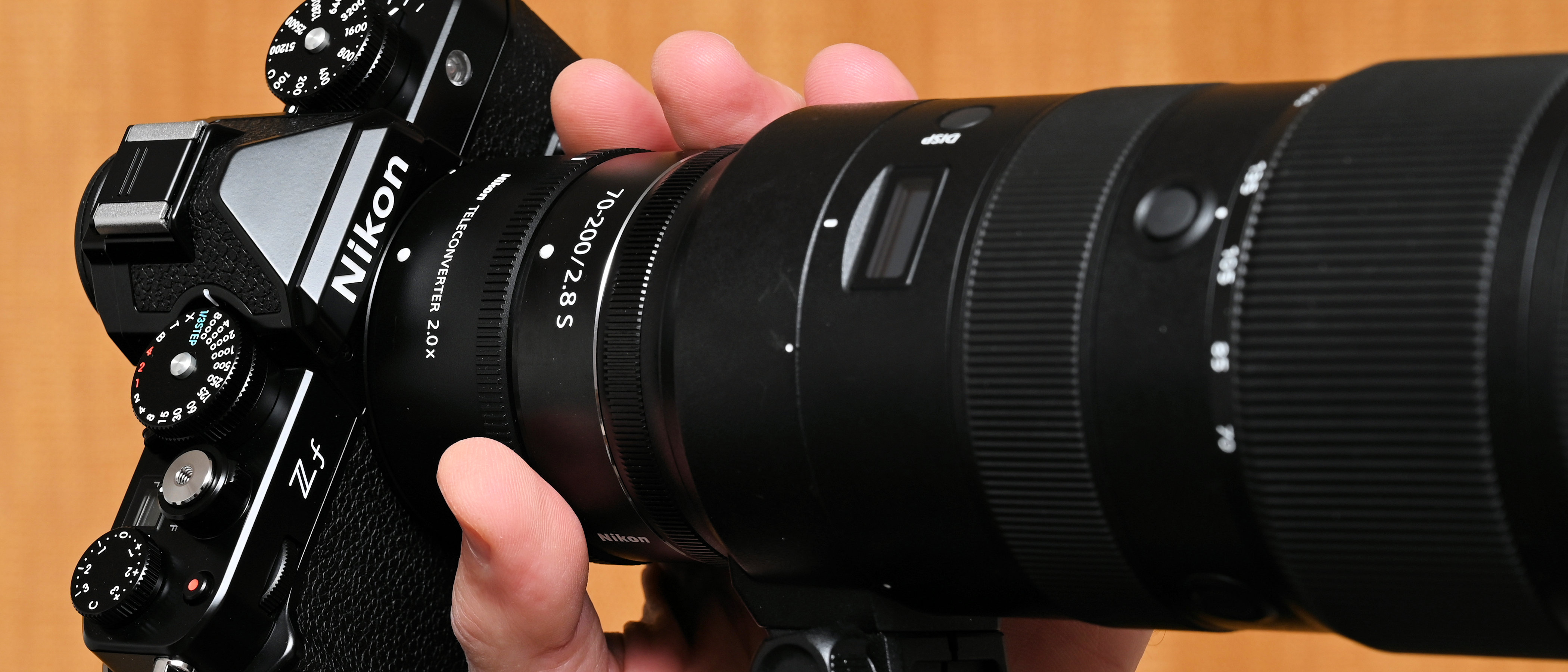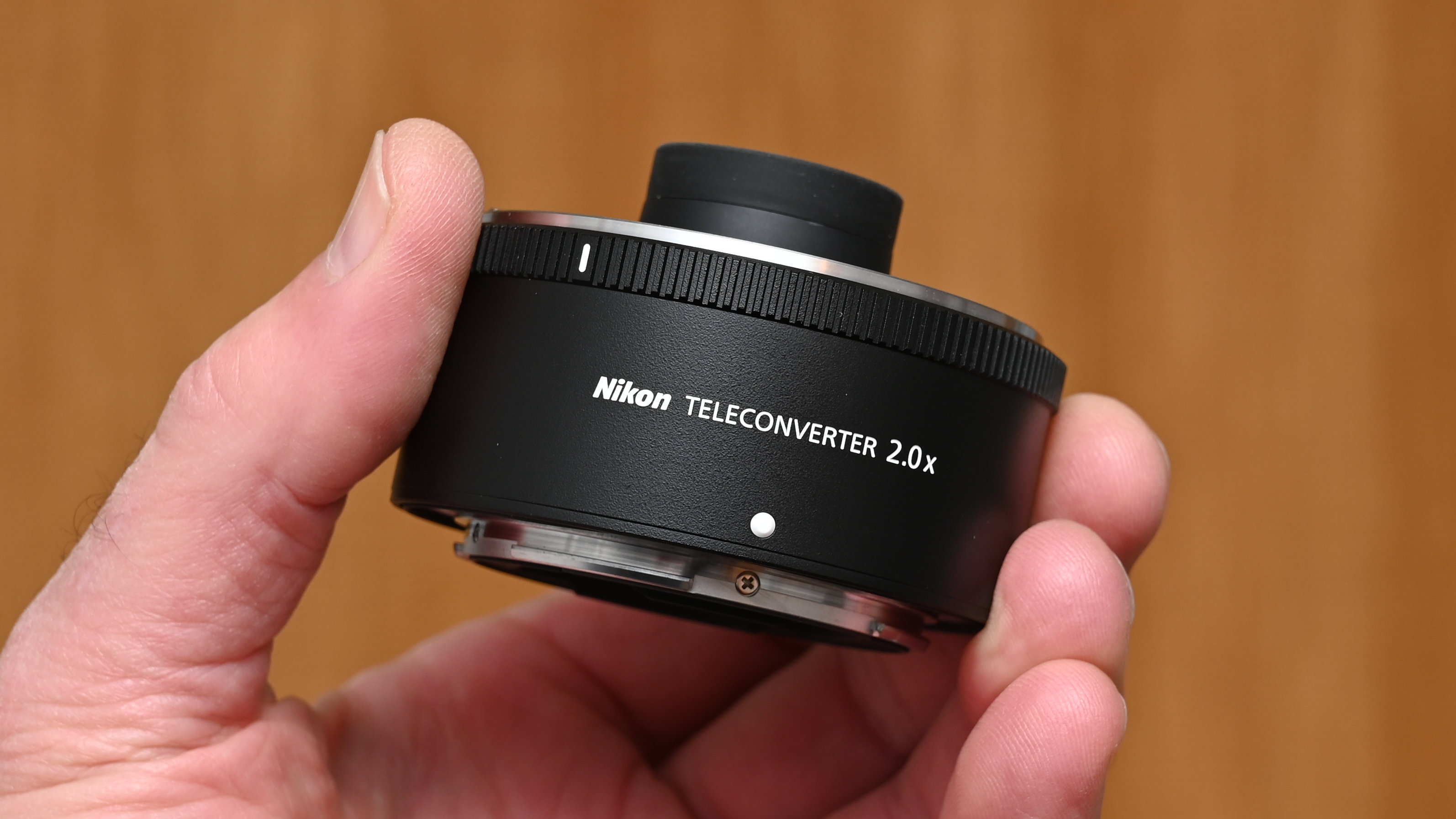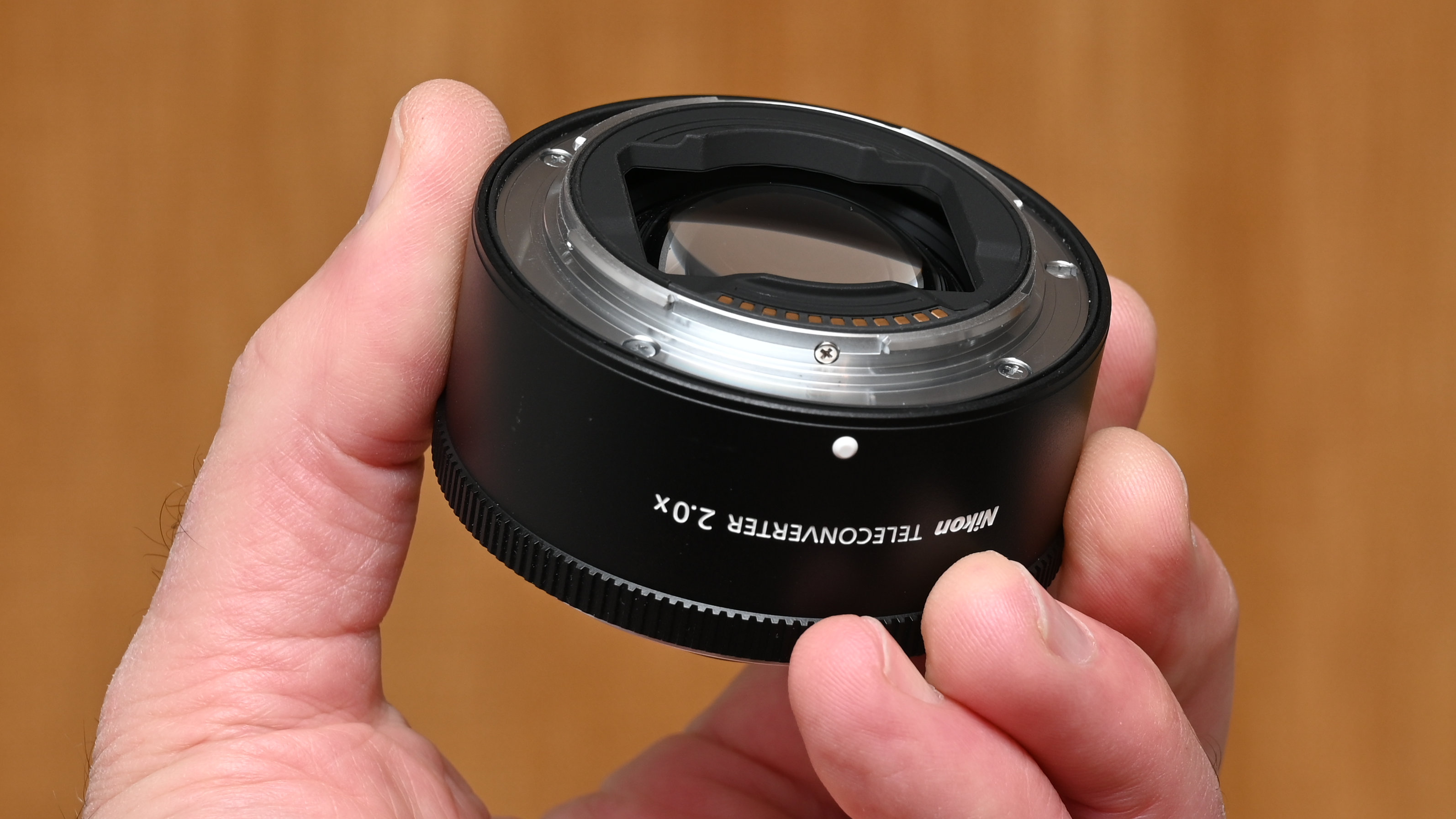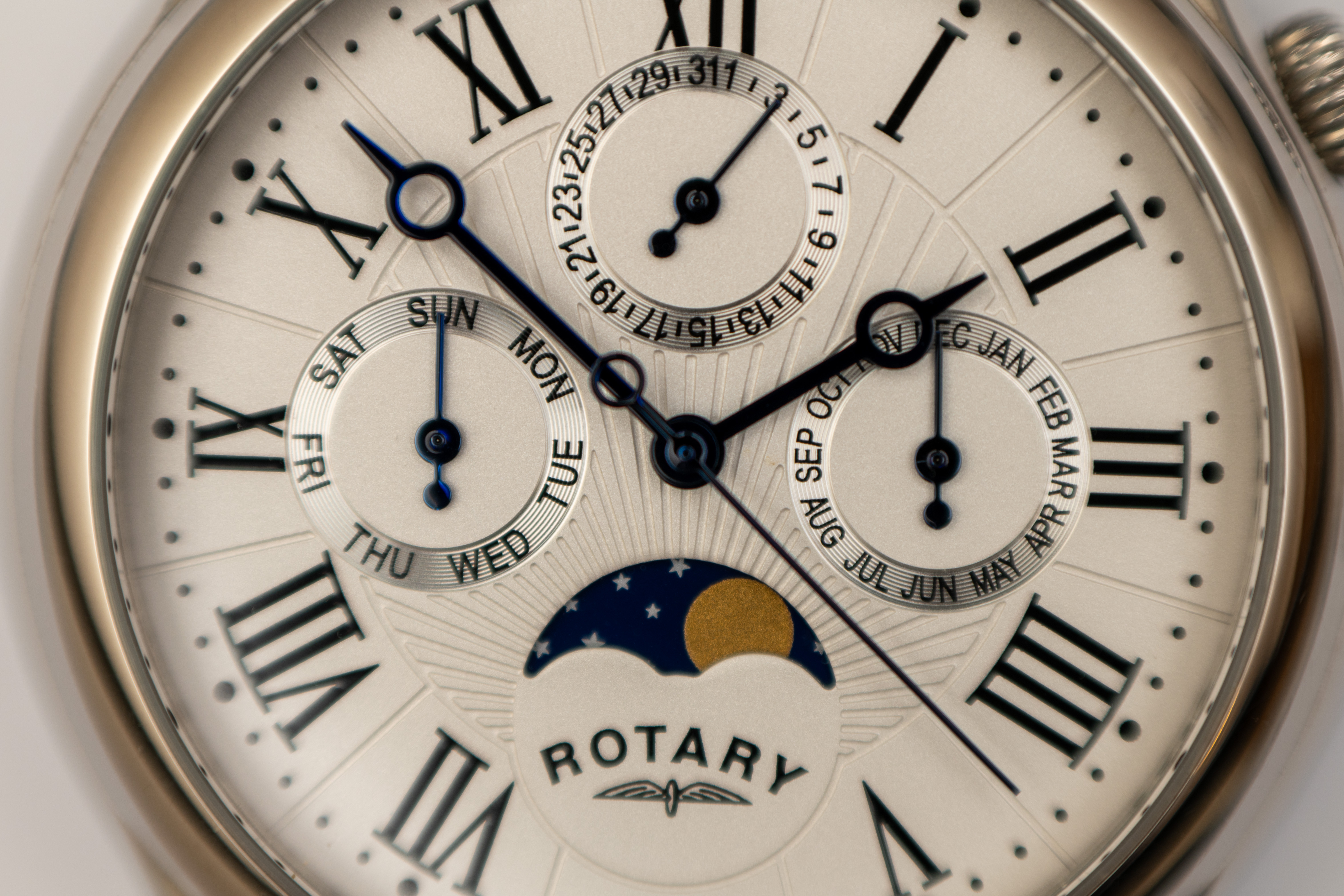Digital Camera World Verdict
By nature, high-quality telephoto lenses tend to be big, heavy and expensive. That makes it especially frustrating if your telephoto prime or zoom runs out of reach when you’re shooting the likes of action, sports and wildlife photography, and you need to buy and carry additional heavyweight glass. Or do you? The Z TC-2.0x doubles the reach of most Nikon Z-system telephoto lenses while adding very little to their size and weight. As usual, you lose a couple of f/stops in aperture brightness but image quality and all-round performance remain very good indeed. While the TC-2.0x is pretty pricey for a teleconverter, it’s still a massive saver in expense as well as size and weight, compared with doubling up on telephoto lenses.
Pros
- +
Solid, weather-sealed build
- +
Remarkably good performance
- +
Doubles your reach and macro potential
Cons
- -
Fairly expensive for a teleconverter
- -
The usual 2 f/stops of aperture reduction
Why you can trust Digital Camera World
The Nikon Z Teleconverter TC-2.0x aims to make amends. Traditionally, teleconverters have earned a dubious reputation for spoiling the image quality of lenses that they’re coupled with. That’s not surprising because a teleconverter is a bit like a glorified magnifying glass that enlarges a portion of the image circle from a lens, while also magnifying every imperfection in its optical performance. Autofocus can also be affected, resulting in relatively pedestrian speeds. But as we’ve reported previously, Nikon says its Z-mount teleconverters will not degrade image quality, and that you’ll ‘enjoy the focusing speed you’ve come to expect from Nikon Z’. We’re here to put those claims to the test, for the TC-2.0x as well as for the TC-1.4x, reviewed separately.
Specifications
Mount: Nikon Z
Full-frame: Yes
Lens construction: 8 elements in 5 groups
Angle of view: N/A
Diaphragm blades: N/A
Aperture reduction: 2 f/stops
Minimum focusing distance: Same as main lens
Maximum magnification ratio: 2.0x that of main lens
Filter size: N/A
Dimensions: 72x50.5mm (32.5mm from flange)
Weight: 270g
Key features
The main feature of any 2.0x teleconverter is naturally its ability to double your telephoto reach. That always comes with a loss in aperture brightness, to the tune of 2 f/stops, but it can’t be helped. As an example, mount the TC-2.0x on a Z 70-200mm f/2.8 VR S lens and you’ll get a 140-400mm effective zoom range with a constant f/5.6 aperture rating throughout. That typically won’t be too much of an issue in this case but, for example, use the TC-2.0x with a Z 600mm f/6.3 VR S and you’ll be down to a maximum aperture of f/13. The net result is that you might need to bump up your camera’s ISO setting a fair bit to get usable shutter speeds for freezing motion.
Teleconverters aren’t the only way to go. Switch your full-frame Z-system camera to DX crop mode and you’ll get a 1.5x magnification in telephoto reach, with no loss of aperture brightness. And if you’re using a camera like the Z 7II, Z 8 and Z 9, with a 45 megapixel sensor, you’ll still get 19.5 megapixel images, even in DX crop mode. Of course though, a teleconverter utilizes the entire image sensor of the camera, so you can shoot with no downsizing.
In terms of compatibility, the TC-2.0x works with a wide range of lenses. As with most teleconverters, the front section protrudes into the rear of the main lens, so there has to be sufficient clearance between the main lens’s rear element and the mounting plate. As it turns out, the long list of teleconverter-compatible Z-system lenses to date is pretty comprehensive, and includes the Z 70-180mm f/2.8, Z 70-200mm f/2.8 VR S, Z 100-400mm f/4.5-5.6 VR S, Z 180-600mm f/5.6-6.3 VR, Z 600mm f/6.3 VR S, Z 400mm f/2.8 TC VR S and Z 800mm f/6.3 VR S. That gives plenty of choice.
The most basic teleconverters down the ages have no electronics but, as you’d expect, the TC-2.0x proves for full electronic communication. There’s therefore no cutback in features, so you get the full raft of autofocus and camera-driven aperture control, optical and in-camera image stabilization, and the writing of lens-based EXIF data to image files.
The optical line-up is based on eight elements within five groups, which equates to two additional elements and one more group compared with the Z TC-1.4x. Both teleconverters include one aspherical element. Nikon’s Super Integrated Coating is also applied, to help retain the clarity of the main lens, and to minimize ghosting and flare.
Another key feature is that the TC-2.0x doubles the main lens’s maximum magnification factor. That’s because the lens’s minimum focus distance is unaffected and the image size is doubled. For example, the Nikon Z 70-180mm f/2.8 has a native maximum macro ratio of 0.48x. Coupled to the TC-2.0x, it becomes virtually a full 1.0x macro lens with a large effective focal length of 360mm. The combination can work well for photographing bugs and other subjects where you can’t get as close as might like to.
Build and handling
Build quality is impeccable. The TC 2.0x has sturdy metal mounting plates fore and aft, and a smart and strong black anodized aluminum casing in between. The construction also features a full set of weather-seals. The teleconverter is pretty compact and lightweight as well, measuring 72x50.5mm and 270g, which is only 50g up on the TC-1.4x. When in use, the overall physical length effectively shrinks from 50.5mm to just 32.5mm, as the protruding section at the front is recessed in the rear of the main lens.
The best camera deals, reviews, product advice, and unmissable photography news, direct to your inbox!
There’s a locking release lever at the front, for detaching the main lens from the teleconverter. Fluorine coatings are applied to the front and rear elements, to repel moisture and greasy fingermarks, and to enable easy cleaning of the external surfaces.
As with the TC-1.4x, the 2.0x comes complete with a BF-N2 Teleconverter Cap (front), LF-N1 Lens Cap (rear), and CL-C4 Lens Case. The front cap has a graphical warning printed on it, highlighting the potential damage that can be caused by trying to mount the teleconverter on a camera the wrong way round, as the protruding section could collide with the camera’s image sensor. The optimistically entitled ‘lens case’ is effectively just a thin pouch.
Performance
Performance is ultimately governed by the main lens. On top of that, given the two f/stop reduction in aperture, you’re likely to often want to shoot at the lens’s widest aperture. Thankfully, we’ve been universally impressed by the quality of Nikon’s Z-system telephoto lenses, even when shooting wide-open. Even so, the image quality of great lenses can be degraded by a teleconverter. Throughout our real-world testing of the TC-2.0x with a Z 70-200mm f/2.8 VR S, we were impressed with levels of sharpness at all zoom settings.
However, we have to say that towards the long end of the zoom range, the scintillating levels of sharpness delivered by the Z 70-200mm became ‘merely’ very good with the addition of the TC-2.0x. The teleconverter didn’t quite live up to Nikon’s claims of no degradation but, compared with other 2.0x teleconverters that we’ve used in the past for DSLRs, the drop in sharpness proved much less noticeable and the resulting images had plenty of bite. We didn’t spot any visible increase in color fringing, while distortion is actually reduced.
The autofocus speed of the Z 70-200mm f/2.8 VR S remains very snappy when using the teleconverter, although there can be a slight slowdown in very dull lighting conditions. We also tested the teleconverter with a Z 70-180mm f/2.8 lens and shot some extreme close-ups, for which the image quality and all-round performance proved similarly impressive, although autofocus sometimes needed a manual nudge to get it in the right ball park. Where featured, optical image stabilization for VR (Vibration Reduction) lenses remains highly effective, and light metering is consistently accurate.
Ultimately, and contrary to Nikon’s claims, the Z TC-2.0x does degrade image quality and all-round performance to some extent, but to much less of an extent than we’ve experienced with many teleconverters in the past. Our lab tests aren’t overly flattering but, in real-world shooting, performance is excellent.
Sample images
Lab results
We run a range of lab tests under controlled conditions, using the Imatest Master testing suite. Photos of test charts are taken across the range of apertures and zooms (where available), then analyzed for sharpness, distortion and chromatic aberrations.
We use Imatest SFR (spatial frequency response) charts and analysis software to plot lens resolution at the center of the image frame, corners and mid-point distances, across the range of aperture settings and, with zoom lenses, at four different focal lengths. The tests also measure distortion and color fringing (chromatic aberration).
Sharpness:
Levels of sharpness are actually very good for the combination of a 70-200mm f/2.8 lens and a 2.0x teleconverter. As you can see from the lab results though, there’s a bit of a drop in sharpness across most of the frame when using the teleconverter. Bear in mind though that, for example, with the comparative results at f/5.6, the lens is actually set to f/2.8 without the teleconverter fitted.
Fringing:
There’s a slight increase in color fringing when using the teleconverter but it’s virtually impossible to spot in real-world shots. Either way, automatic in-camera correction is available to eliminate any fringing.
Distortion: -0.26
Pincushion distortion can be noticeable when using the 70-200mm lens on its own, at least with in-camera correction disabled. With the TC-2.0x brought into play, there’s just a hint of very slight barrel distortion, when in-camera correction is switched off.
Verdict
By nature, high-quality telephoto lenses tend to be big, heavy and expensive. That makes it especially frustrating if your telephoto prime or zoom runs out of reach when you’re shooting the likes of action, sports and wildlife photography, and you need to buy and carry additional heavyweight glass. Or do you? The Z TC-2.0x doubles the reach of most Nikon Z-system telephoto lenses while adding very little to their size and weight. As usual, you lose a couple of f/stops in aperture brightness but image quality and all-round performance remain very good indeed. While the TC-2.0x is pretty pricey for a teleconverter, it’s still a massive saver in expense as well as size and weight, compared with doubling up on telephoto lenses.
Read more:
• Best camera lenses to get
• Best Canon lenses
• Best Nikon lenses
• Best Sony lenses
Matthew Richards is a photographer and journalist who has spent years using and reviewing all manner of photo gear. He is Digital Camera World's principal lens reviewer – and has tested more primes and zooms than most people have had hot dinners!
His expertise with equipment doesn’t end there, though. He is also an encyclopedia when it comes to all manner of cameras, camera holsters and bags, flashguns, tripods and heads, printers, papers and inks, and just about anything imaging-related.
In an earlier life he was a broadcast engineer at the BBC, as well as a former editor of PC Guide.






















